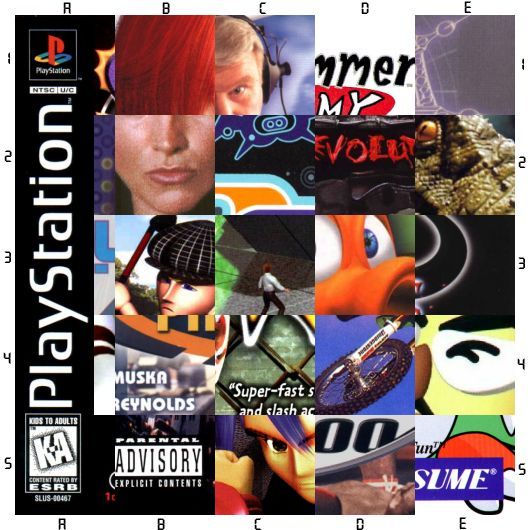

| Spyro 2: Ripto's Rage | Dino Crisis | Um Jammer Lammy | ||
| N20: Nitrous Oxide | ||||
| Wipeout 3 | Hot Shots Golf | Intelligent Qube | Q*Bert | |
| Point Blank 2 | ||||
| Legend Of Legaia | Bust A Move 4 |
| Spyro 2: Ripto's Rage | Dino Crisis | Madden NFL 2000 | Um Jammer Lammy | |
| Xena Warrior Princess | N20: Nitrous Oxide | ECW Hardcore Revolution | Jurassic Park Warpath | |
| Wipeout 3 | Hot Shots Golf | Intelligent Qube | Q*Bert | |
| Tony Hawk's Pro Skater | Championship Motocross feat. R. Carmichael | Point Blank 2 | ||
| Legend Of Legaia | Knockout Kings 2000 | Bust A Move 4 |
| Spyro 2: Ripto's Rage | Dino Crisis | Madden NFL 2000 | Um Jammer Lammy | Final Fantasy 8 |
| You Don't Know Jack | Xena Warrior Princess | N20: Nitrous Oxide | ECW Hardcore Revolution | Jurassic Park Warpath |
| Wipeout 3 | Hot Shots Golf | Intelligent Qube | Q*Bert | Resident Evil 3: Nemesis |
| Animaniacs Ten Pin Alley | Tony Hawk's Pro Skater | Vs. | Championship Motocross feat. R. Carmichael | Point Blank 2 |
| Ogre Battle Limited Edition | Grand Theft Auto | Legend Of Legaia | Knockout Kings 2000 | Bust A Move 4 |
